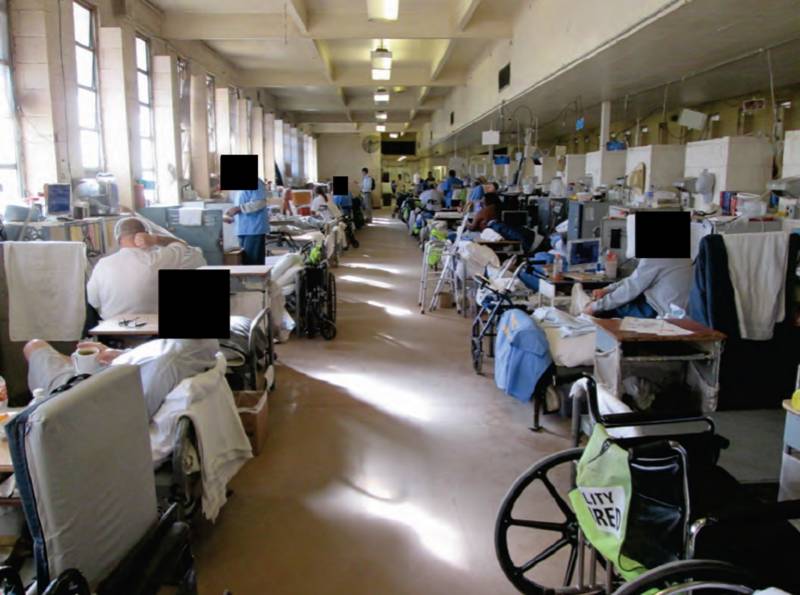News of the three cases emerged within days of CDCR announcing the first inmate to die from COVID-19 on Sunday.
The 60-year-old man, who also has not been identified, was also incarcerated at CIM.
Roughly 700 state prisoners have been tested, a small fraction of the more than 110,000 people currently incarcerated around the state. Of those, 151 were found to have COVID-19.
Medical staff in prisons, like their counterparts in the free world, are primarily testing people with symptoms.
The notable exception to that has been at a prison in Los Angeles County, where officials last week started mass testing men who share housing facilities. The California State Prison, Los Angeles County facility had the second largest prisoner outbreak, with 58 inmates and 15 employees testing positive for the virus.
Officials saw case numbers jump there after testing 100 men who share the same housing unit, according to a press release Sunday from the CDCR.
“These asymptomatic cases do not represent a new outbreak,” according to the press release, “but were tested out of an abundance of caution after known exposure.”
The inmate who died at CIM had been quarantined in a dorm with other inmates, according to papers filed in federal court Monday. His symptoms worsened on April 16, and he was transferred to an area hospital where he died three days later. Most of the 64 inmates who’ve tested positive for COVID-19 were housed in that same dorm, according to prison officials.
“Unfortunately, I believe that it's going to continue to play out at that prison,” said Alison Hardy, an attorney with Prison Law Office, a public interest law firm that advocates for the rights of inmates. “They're going to be more cases that come up.”
Hardy's colleagues visited CIM in 2019.
“There are many crowded dormitories that hold people who are elderly and some of whom are disabled, many of whom have chronic illnesses,” Hardy said. “For the past few weeks, they have been living together. The virus has been there.”
Prison officials are in the process of creating social distance inside dorms statewide by arranging beds in groups of eight. These “pods” will be separated by 6 feet of space, according to an updated plan filed in federal court this week.
The prison system initially asked employees a series of questions about their health when they came to work to determine whether they might be symptomatic. On March 27, the agency switched to infrared temperature screening for employees. Since April 15, staff and inmates are required to wear cloth face masks.
“Although there have been screening measures in place for a while for staff, people who don't have symptoms can be transmitting virus,” Hardy said. “I have deep concerns that over the next few months, that whole history of people bringing the virus in and people in the dorms starting to get the virus, is going to play out at other prisons.”
Hardy's office filed a series of emergency motions in federal court over the past few weeks seeking the release or relocation of medically vulnerable inmates.
U.S. District Judge Jon Tigar deferred to corrections officials to reduce the risk of COVID-19 transmission in his April 17 denial of the latest motion.

